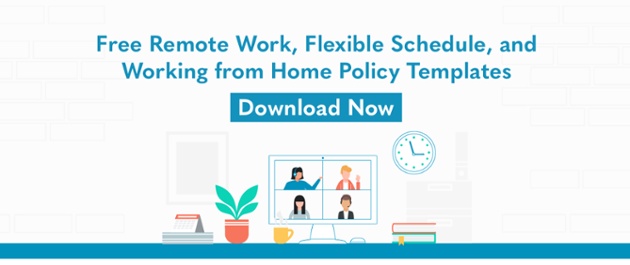Have you heard the news?
New research from Harvard Business School found that companies reap the benefits when they provide employees with flexible work arrangements: this means employees can choose the location and hours in which they work.
Not only did the study find that employee productivity increased, but organizational costs and employee turnover were reduced too. Even Bill Gates is on board with flexibility and remote work, saying:
"The competition to hire the best will increase in the years ahead. Companies that give extra flexibility to their employees will have the edge in this area."
The new study was conducted by Prithwiraj Choudhury, an associate professor at Harvard Business School, and his colleagues. The goal was to, "isolate productivity changes among workers with similar job functions under different remote work conditions." To achieve this goal, they compared flexible work arrangements for patent workers at the U.S. Patent and Trademark Office (USPTO).
Some patent workers were given a "work from anywhere" arrangement, while others had a "work from home" policy that required them to live within 50 miles of the USPTO headquarters and to report to the office once a week.
So, what were the findings of their research?
5 Ways Companies Benefit by Allowing Remote Work
- Employees with "work from anywhere" arrangement were 4.4% more productive than those with the more traditional “work from home” policy.
- Office costs (e.g., office space and related costs) were reduced by $38.2 million.
- Increased worker productivity reduced the need for new hires, which lowered hiring costs by 4.4%.
- "Work from anywhere" workers were able to move to low-cost cities and boost their real income, have flexible schedules, and maintain a better work-life balance. These factors help with retention and boost the intrinsic motivation for employees to perform well in their roles.
- Remote work makes organizations more environmentally friendly. Those who worked remotely avoided driving 84 million miles which reduced emissions by more than 44,000 tons.
A "work from anywhere" policy is a win-win for employers and workers. Employers will see productivity, financial, and environmental gain, and workers can move to lower-cost areas or live closer to family, and reduce their commuting costs.
How to Establish a Remote Work Policy at Your Company
If this new research has inspired you to implement a flexible work arrangement at your company, consider developing a remote work policy. Its purpose is to document all guidelines related to remote work (e.g., how to request working remotely, communication, meetings, tools, and support) and clarify anything that might be confusing or open to interpretation.
There are a few things to research and plan for before getting started with a remote work policy:
1. Determine who can work remotely.
Are there specific teams and roles that can work remotely? Jobs that are well-suited for a flexible work policy include, but aren't limited to:
- Information technology
- Coding and software development
- Accounting and bookkeeping
- Sales
- Marketing
Consult your HR, legal, and finance teams before rolling out any policies to ensure a smooth transition.
2. Provide tools that enable remote work.
For employees to be successful in a flexible work environment, they need technology to help them do their best work. Determine which tools your team will need for employees to have a great remote work experience.
Communication tools like email, Slack, phone calls, and video conferencing software can keep teams connected no matter where they are. And smart video conferencing cameras, like the Meeting Owl, help to create a more natural meeting presence. With a 360° camera and high-quality audio, an intelligent video conference camera can make remote workers feel like they're in the meeting room.
3. Set clear expectations.
If you're serious about creating a remote work policy, transparency is key. Document exactly what is expected of remote employees, especially in regards to communication. Which communication tools will be used for frequent meetings, like weekly 1:1s or bi-weekly team standups? How will larger events like all-hands meetings or learning and development seminars be handled? These are just a few things to consider when developing your own remote work policy.
Katie Burke, Chief People Officer at HubSpot, offers this advice for those who plan to provide flexible work arrangements and remote work at their company:
"Be open to feedback, be clear on what you can and can't do in a given time period, and don't try to do everything at once. Pick a few things to try, experiment, and learn from -- then iterate on the results and improve."
With preparation and planning, you can make a remote work policy that's the right fit for your company and employees. If you're curious to know if you're ready to take the remote work leap, our friends at Workplaceless have created a remote work readiness assessment that will show you ways you can gear up to go remote.
Ready to get started? Check out these remote work policy templates to get started with flexible work arrangements.


